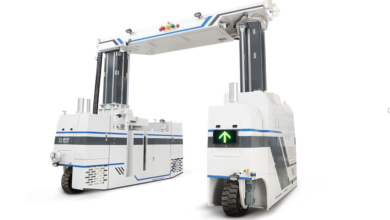Navigating the Shield: Essential Factors for Selecting Your Ideal Anti-Piracy Partner

Choosing the right anti piracy companies is an important business decision that can either break or be in your intellectual property protection strategy at a time when unauthorised duplication and distribution are presenting an ongoing threat to digital content. Despite the fact that these alternatives are many in the market, they are not created equally as some of them purport to provide greater protection than the others do. A critical decision requires a consideration of several variables and features including but not limited to cost. Your perfect match will ensure that you sleep peacefully giving you the chance to grow your company and protect your invaluable digital property. Being aware of what to seek in the anti-piracy business makes you authoritative to select that which best suits your long-range plans and specific needs.
1. Technical Expertise and Solution Sophistication
Your first priority when assessing anti-piracy firms should be the breadth of their technological know-how. Get suppliers that are well-informed about the latest methods of pirates and employ the latest technologies in their company to effectively attack them. In order to stay abreast of the evolving risks, the leading companies invest heavily in research and development and constantly revise their solutions. They must ensure that their technical teams do have a history of success with encryption technologies, digital rights management and content protection across multiple platforms and formats. Examine how they have coped with the problematic technological challenges and whether they are able to adjust their responses to emerging threats.
2. Industry Experience and Proven Track Record
The efficiency of anti-piracy technologies is greatly impacted by experience in your particular sector or type of material. Businesses with in-depth industry knowledge are aware of the particular difficulties, routes of distribution, and trends of piracy that your company faces. Examine their case studies and portfolio of successful implementations that show quantifiable outcomes in comparable situations. Seek out suppliers who have withstood shifting market conditions and modified their approaches accordingly. Experienced businesses can speed up takedown procedures and enforcement measures since they frequently have established contacts with law enforcement, ISPs, and platform administrators. Their past performance statistics ought to demonstrate steady progress in preventing piracy and protecting content.
3. Comprehensive Service Coverage and Capabilities
Instead of focusing simply on some facets of content security, an anti-piracy company’s range of services should match your whole protection requirements. Assess if they provide complete solutions, such as technology for monitoring, detection, takedown, legal assistance, and prevention. For optimal efficacy, the top providers use integrated strategies that incorporate many protection techniques. Think about their capacity to keep an eye on a variety of platforms, including social media, file-sharing websites, peer-to-peer networks, and streaming websites. Both proactive protection techniques that stop illegal distribution and reactive ones like content removal should be part of their service offering. Additionally, having comprehensive coverage enables them to modify their offerings in response to new distribution channels or business expansion, offering scalable solutions that change to meet your demands.
4. Response Time and Enforcement Efficiency
The efficiency of an anti-piracy company’s protection is directly impacted by how quickly it recognizes and reacts to instances of infringement. By minimizing exposure time and lowering the quantity of illicit downloads or views, quick response times reduce the possible harm from unlawful dissemination. Examine their normal resolution times, takedown success rates, and average detection durations for various infringement case categories. The most successful businesses use automated monitoring systems that offer real-time notifications and quick reaction times. With defined standards for varying degrees of piracy event severity, their enforcement processes ought to be simplified and effective. Seek out suppliers that can show ongoing progress in their efficiency measures and who keep thorough records of response times.
5. Global Reach and International Capabilities
Due to the global nature of piracy in the digital age of today where even national borders are no longer impregnable, global protection capabilities are essential towards the effective provision of content security. Review the international scope of the anti-piracy firm, considering its ability to observe and act in many different countries, languages and jurisdictions. In order to ensure that appropriate measures are taken irrespective of where the violation occurs, the leading providers maintain partnership with regional attorneys, policing agencies, and platform management all over the world. Take into account their knowledge of international copyright treaties, rules, and enforcement practices, which differ greatly among nations. Multilingual monitoring services and culturally sensitive enforcement tactics that honor regional traditions and legal systems are more examples of global capabilities.
6. Technology Integration and Compatibility
To make the anti-piracy system a success, the system during deployment and a consistent operation, should be able to fit in without disrupting your existing organizational technological structure. Consider how well the solutions they offer will work with the current distribution networks, security protocols and content management systems you have. The leading enterprises offer flexible integration options which enhance the overall security capabilities and generate the minimal disruption to your current operations. Think about their data exchange protocols, API capabilities, and compatibility with the platforms and industry-standard tools you now use. Their capacity to collaborate with your legal and business teams via intuitive user interfaces and extensive reporting systems is another aspect of technology integration. Contemporary anti-piracy solutions should enhance your current operations rather than make them more difficult. They should offer better security without adding more administrative work or technological issues that might reduce production.
7. Cost Structure and Value Proposition
You may make well-informed judgments that strike a balance between protection efficacy and financial limitations by being aware of the entire pricing structure of anti-piracy services. Beyond the initial cost, take into account recurring expenses, scaling fees, and possible extra fees for more protection volumes or improved services. Businesses that provide clear price structures and detailed descriptions of the services covered at each level provide the best value. Examine their pricing strategy in light of the possible losses from unprotected piracy, taking into account the costs to their brand’s reputation as well as the immediate impact on income. Some businesses provide extra value guarantee through performance-based pricing structures that match their success with your protection outcomes.
Conclusion
It’s important to carefully evaluate a number of aspects when choosing an anti-piracy firm via doverunner, going beyond simple service features and cost. Technical competence, expertise in the field, service components, response time, global abilities, integration potentials, cost models and quality of support can all become prime factors in the decision of selecting the company with which you want to have a longer term association to protect your most valuable digital assets. By taking the appropriate decision, you will ensure that your intellectual property is secure, your business can grow, and you will have a restful sleep in the more complex world of digital operations.






